Addictions
Canadian doctor admits gov’t-funded ‘safe supply’ drugs are likely diverted to children

Dr. Andrea Sereda addresses Moms Stop the Harm online.
From LifeSiteNews
Dr. Andrea Sereda, an advocate for the safe supply program, had previously denied that kids could get access to the opioids.
A “safe supply” drug advocate has admitted that children probably use drugs diverted from government programs.
During an annual general meeting of Moms Stop the Harm (MSTH), an advocacy group that champions radical harm-reduction policies, Dr. Andrea Sereda, a prominent Canadian advocate for the “safe supply” drug program, revealed that kids are likely using diverted opioids.
“I’m not going to stand up here and say that some kids, some adolescents, are not accessing diverted safe supply and using diverted safe supply,” she declared during the June 1 meeting.
“Kids experiment with everything, and we need to be honest to ourselves that kids probably experiment with diverted safer supply as well,” Sereda continued.
“Safe supply” is a euphemism for government-provided drugs given to addicts under the assumption that a more controlled batch of narcotics reduces the risk of overdose. Critics of the policy argue that giving addicts drugs only enables their behavior, puts the public at risk, disincentivizes recovery from addiction and has not reduced – and sometimes has even increased – overdose deaths when implemented.
Sereda even gave the phenomenon of children using diverted “safe supply drugs” a positive spin, claiming that one parent told her these drugs kept her child alive “longer” than expected.
“I met a parent about a year ago who had lost their child to a fentanyl overdose,” she said. “This parent approached me, and they told me that their child had been using safe supply given them to them by a friend.”
“I thought this parent was going to be angry with me, but that parent told me that that diverted safe supply had kept their child (…) alive longer than the otherwise [they] would have been,” she continued.
Sereda has been a strong advocate for the program and founded Canada’s first safer supply program in 2016 at the London InterCommunity Health Centre (LIHC) in London, Ontario.
Previously, when speaking to Parliament or publicly addressing Canadians, Sereda has denied the possibility of children consuming “safe supply” drugs.
In May 2023, she told the London Free Press that, “Not a single physician critic of safer supply has been able to provide us with an example of medications being sold to children. This seems to be the boogeyman of safer supply. It is silly.”
Similarly, Sereda told the House of Commons health committee in February that there is no evidence that children are taking the “safe supply” drugs.
“Do you agree that it’s possible that diverted opioids are ending up in the hands of people they aren’t prescribed to, or even children? Yes or no?” asked Conservative Member of Parliament (MP) Todd Doherty.
”We have no evidence that they (safer supply hydromorphone tablets) are ending up in the hands of children,” Sereda responded.
Later, Conservative MP Laila Goodridge asked the same question, and Sereda answered, “They’re not being sold to kids.”
However, it may be that Sereda tells a different story when she believes she is not being recorded, as her remarks to the meeting seem to suggest.
During the meeting, she congratulated the Drug User Liberation Front’s distribution of “unadulterated crystal meth and cocaine.”
“If physicians could prescribe that, and this is where I’m afraid there’s a mole like on that other Zoom call earlier this week, right? But if physicians could prescribe crystal meth and cocaine, I think we would actually start to get somewhere,” she said, apparently referring to a National Post article, which published secret audio recordings from activists planning to disrupt a recovery-oriented addiction conference in Vancouver.
It is unclear why Sereda would not know the meeting was being recorded; that it would be captured and downloaded to YouTube was made clear in the opening remarks.
Notably, Sereda’s admission comes after the program was deemed such a disaster in British Columbia that the province asked Trudeau recriminalize drugs in public spaces. Nearly two weeks later, the Trudeau government announced it would “immediately” end the province’s drug program.
Beginning in early 2023, Trudeau’s federal policy in effect decriminalized hard drugs on a trial-run basis in British Columbia.
Under the policy, the federal government allowed people within the province to possess up to 2.5 grams of hard drugs without criminal penalty. Selling drugs remained a crime.
Since its implementation, the province’s drug policy has been widely criticized, especially after it was found that the province broke three different drug-related overdose records in the first month the new law was in effect.
The effects of decriminalizing hard drugs in various parts of Canada have been exposed in Aaron Gunn’s recent documentary, Canada is Dying, and in the U.K. Telegraph journalist Steven Edginton’s mini-documentary, Canada’s Woke Nightmare: A Warning to the West.
Gunn says he documents the “general societal chaos and explosion of drug use in every major Canadian city.”
“Overdose deaths are up 1,000 percent in the last 10 years,” he said in his film, adding that “(e)very day in Vancouver four people are randomly attacked.”
Addictions
Man jailed for trafficking diverted safer supply drugs, sparking fresh debate over B.C. drug policies
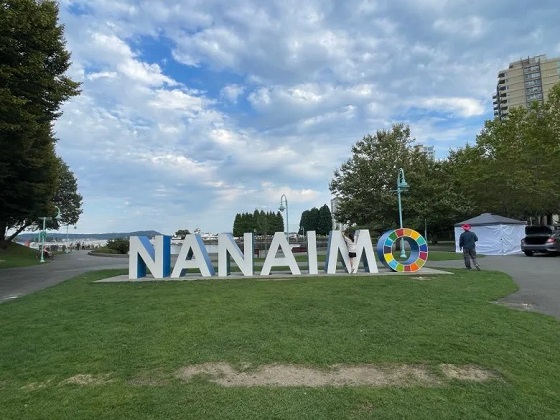
Nanaimo drug trafficker’s case is further evidence of safer supply diversion. But some sources say even diverted drugs reduce harm
In early May, 68-year-old Ronald Schilling of Nanaimo, B.C., was sentenced to three years in prison for trafficking street drugs such as fentanyl and meth — as well as government-supplied opioids.
When authorities had arrested Schilling two years earlier, they had found him in possession of more than 80 government-supplied opioid pill bottles labeled with other patients’ names.
Those pills had been dispensed to patients under B.C.’s “prescribed alternatives” program, more commonly known as safer supply. The program aims to reduce overdose deaths by dispensing pharmaceutical opioids to drug users as an alternative to toxic street drugs.
In Schilling, patients of this program had found a drug dealer who was willing to give them harder drugs — such as fentanyl — in exchange for their prescription opioids. Schilling would in turn sell their prescription opioids to others.
“Mr. Schilling preyed upon people who were taking the safe supply drug,” Provincial Court Judge Karen Whonnock said during the sentencing hearing.
Schilling’s case is further evidence that safer supply opioids are making their way to the streets — and having unintended negative consequences. However, some sources say even diverted pills reduce harm if they flood the market with safer drugs.
‘Upside Down’
Schilling, a former charity worker, developed a cocaine addiction after the sudden death of his partner. He ultimately turned to drug trafficking to fund his addiction, according to his lawyer.
In court, the prosecution described Schilling as operating a mid-level drug trafficking scheme that exploited B.C.’s safer supply program.
Schilling coordinated with multiple dealers to source both illicit and prescription drugs, and had at least three individuals working under him. His text messages showed he would arrange to meet clients near Nanaimo’s Outreach Pharmacy to trade potent street drugs for the prescribed medications they had just received.
He operated under the name “Upside Down Inc.” — “down” being a street reference to fentanyl — and had business cards to match. To reassure users that the street drugs were safe, he would have them tested at a local overdose prevention site.
‘Predatory behaviour’
While Schilling’s case is unusual, it adds to the growing body of evidence that provincial safer supply programs are not always being used as intended.
In one example, a B.C. government report released in February revealed that more than 60 pharmacies were involved in a kick-back scheme, offering patients cash or rewards to fill safer supply prescriptions they did not need. Some of those drugs were then sold on the black market.
Collen Middleton, a co-founder of the Nanaimo Area Public Safety Association, refers to safer supply drugs as the “perfect consumer product.”
“They are a product that produces its own demand, because it’s addictive,” said Middleton, whose neighbourhood association is a vocal critic of safer supply.
One of Middleton’s concerns is that safer supply drugs are presented as safe, despite being addictive themselves. He says this makes them an effective gateway to more dangerous street drugs like fentanyl.
“Those drugs are being marketed as safe to kids … [so] you’re bringing more people into using addictive drugs, more abuse, more predatory behaviour toward a vulnerable segment of the population,” he said.
The B.C. Ministry of Health told Canadian Affairs in an emailed statement that it takes the “diversion of prescription medications … very seriously.”
“The unauthorized distribution is illegal and puts the public at risk,” it said.
In response to the B.C. pharmacy scandal, the province tightened its protocols for dispensing prescription opioids. All new and most existing patients must take prescription opioids under the supervision of health-care professionals, a protocol known as witnessed dosing. In rare cases, existing clients may continue to take their doses offsite if the prescriber views the risk of diversion as low.
Mixed evidence
In its statement to Canadian Affairs, B.C.’s health ministry also said its safer supply program “plays an important role in reducing substance use-related harms” and can lower overdose risk by as much as 91 per cent.
This figure comes from a 2024 B.C. study published in the British Medical Journal. That study found individuals prescribed pharmaceutical opioids early in the pandemic were 91 per cent less likely to die from any cause in the week after receiving at least four days of safer supply opioids, compared to a control group.
The study only tracked outcomes during the week following prescription fills. It did not verify whether individuals took the opioids as prescribed.
A study published in April in The Lancet Public Health shows B.C.’s safer supply programs are linked to improved short-term health outcomes, including fewer overdoses and hospital visits.
However, a population-level study in JAMA Health Forum found no significant reduction in overdoses or mortality associated with B.C.’s safer supply and decriminalization policies. It also suggested possible increases in emergency department visits and hospitalizations.
Comprehensive long-term research on the health impacts of Canadian safer supply programs is limited.
Creating a market
Some sources say the diversion of prescription opioids may be less harmful than the alternatives.
“If you could replace [street] drugs with safer pharmaceutical alternatives, people’s needs would be met,” said Perry Kendall, B.C.’s former provincial health officer and a long-time harm reduction advocate.
“They wouldn’t have to turn to the illicit market, and their risk of a toxic drug overdose would be significantly reduced.”
In Kendall’s view, Schilling was in some ways functioning as a harm-reduction worker.
“[Schilling] was kind of offering a harm reduction service, as well as supplying people with the drugs they wanted,” Kendall said.
Kendall’s views are echoed in a 2023 B.C. government review that notes diversion of safer supply drugs to people already at risk of drug poisoning may be beneficial. But the review also acknowledges that diversion to users who would not otherwise use unregulated drugs is harmful.
Still, Kendall acknowledged a fundamental issue: “[Safer supply opioids don’t] really give you the same high [as fentanyl]. So if you can trade [them] to … get what you’re looking for, which is fentanyl, then that’s what you will do.”
Leonard Krog, the mayor of Nanaimo, says it is clear that, within Nanaimo, B.C.’s policies to help drug users are making it easier for dealers to sell their toxic drugs.
“We have a safe injection site next to City Hall, and there’s no question dealers are coming down here and they’re selling their stuff, because the market’s right here,” said Krog.
But Kendall warns that pulling back on decriminalization and safer supply programs creates a dangerous gap.
“The daftest thing you can do is create a market of desperate people and then fail to fill it,” said Kendall. “Somebody’s going to meet those needs — and they’re not going to be law-abiding citizens.”
Krog is unconvinced.
“If we make it easier for the wolves to successfully exploit the sheep, is that a good thing?”
This article was produced through the Breaking Needles Fellowship Program, which provided a grant to Canadian Affairs, a digital media outlet, to fund journalism exploring addiction and crime in Canada. Articles produced through the Fellowship are co-published by Break The Needle and Canadian Affairs.
Subscribe to Break The Needle
Addictions
News For Those Who Think Drug Criminalization Is Racist. Minorities Disagree
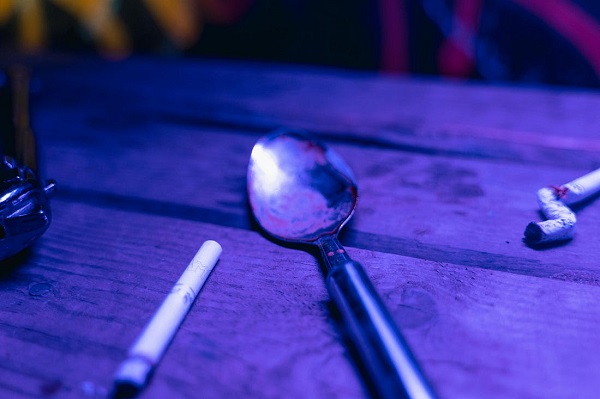
A Canadian poll finds that racial minorities don’t believe drug enforcement is bigoted.
By Adam Zivo
[This article was originally published in City Journal, a public policy magazine and website published by the Manhattan Institute for Policy Research]
Is drug prohibition racist? Many left-wing institutions seem to think so. But their argument is historically illiterate—and it contradicts recent polling data, too, which show that minorities overwhelmingly reject that view.
Policies and laws are tools to establish order. Like any tool, they can be abused. The first drug laws in North America, dating back to the late nineteenth and early twentieth centuries, arguably fixated on opium as a legal pretext to harass Asian immigrants, for example. But no reasonable person would argue that laws against home invasion, murder, or theft are “racist” because they have been misapplied in past cases. Absent supporting evidence, leaping from “this tool is sometimes used in racist ways” to “this tool is essentially racist” is kindergarten-level reasoning.
Yet this is precisely what institutions and activist groups throughout the Western world have done. The Drug Policy Alliance, a U.S.-based organization, suggests that drug prohibition is rooted in “racism and fear.” Harm Reduction International, a British NGO, argues for legalization on the grounds that drug prohibition entrenches “racialized hierarchies, which were established under colonial control and continue to dominate today.” In Canada, where I live, the top public health official in British Columbia, our most drug-permissive province, released a pro-legalization report last summer claiming that prohibition is “based on a history of racism, white supremacy, paternalism, colonialism, classism and human rights violations.”
These claims ignore how drug prohibition has been and remains popular in many non-European societies. Sharia law has banned the use of mind-altering substances since the seventh century. When Indigenous leaders negotiated treaties with Canadian colonists in the late 1800s, they asked for “the exclusion of fire water (whiskey)” from their communities. That same century, China’s Qing Empire banned opium amid a national addiction crisis. “Opium is a poison, undermining our good customs and morality,” the Daoguang emperor wrote in an 1810 edict.
Today, Asian and Muslim jurisdictions impose much stiffer penalties on drug offenders than do Western nations. In countries like China, Saudi Arabia, Iran, Singapore, and Thailand, addicts and traffickers are given lengthy prison sentences or executed. Meantime, in Canada and the United States, de facto decriminalization has left urban cores littered with syringes and shrouded in clouds of meth.
The anti-drug backlash building in North America appears to be spearheaded by racial minorities. When Chesa Boudin, San Francisco’s former district attorney, was recalled in 2022, support for his ouster was highest among Asian voters. Last fall, 73 percent of Latinos backed California’s Proposition 36, which heightened penalties for drug crimes, while only 58 percent of white respondents did.
In Canada, the first signs of a parallel trend emerged during Vancouver’s 2022 municipal election, where an apparent surge in Chinese Canadian support helped install a slate of pro-police candidates. Then, in British Columbia’s provincial election last autumn, nonwhite voters strongly preferred the BC Conservatives, who campaigned on stricter drug laws. And in last month’s federal election, within both Vancouver and Toronto’s metropolitan areas, tough-on-crime conservatives received considerable support from South Asian communities.
These are all strong indicators that racial minorities do not, in fact, universally favor drug legalization. But their small population share means there is relatively little polling data to measure their preferences. Since only 7.6 percent of Americans are Asian, for example, a poll of 1,000 randomly selected people will yield an average of only 76 Asian respondents—too small a sample from which to draw meaningful conclusions. You can overcome this barrier by commissioning very large polls, but that’s expensive.
Nonetheless, last autumn, the Centre for Responsible Drug Policy (a nonprofit I founded and operate) did just that. In partnership with the Macdonald-Laurier Institute, we contracted Mainstreet Research to ask over 12,000 British Columbians: “Do you agree or disagree that criminalizing drugs is racist?”
The results undermine progressives’ assumptions. Only 26 percent of nonwhite respondents agreed (either strongly or weakly) that drug criminalization is racist, while over twice as many (56 percent) disagreed. The share of nonwhite respondents who strongly disagreed was three times larger than the share that strongly agreed (43.2 percent versus 14.3 percent). These results are fairly conclusive for this jurisdiction, given the poll’s sample size of 2,233 nonwhite respondents and a margin of error of 2 percent.
Notably, Indigenous respondents seemed to be the most anti-drug ethnic group: only 20 percent agreed (weakly or strongly) with the “criminalization is racist” narrative, while 61 percent disagreed. Once again, those who disagreed were much more vehement than those who agreed. With a sample size of 399 respondents, the margin of error here (5 percent) is too small to confound these dramatic results.
We saw similar outcomes for other minority groups, such as South Asians, Southeast Asians, Latinos, and blacks. While Middle Eastern respondents also seemed to follow this trend, the poll included too few of them to draw definitive conclusions. Only East Asians were divided on the issue, though a clear majority still disagreed that criminalization is racist.
As this poll was limited to British Columbian respondents, our findings cannot necessarily be assumed to hold throughout Canada and the United States. But since the province is arguably the most drug-permissive jurisdiction within the two countries, these results could represent the ceiling of pro-drug, anti-criminalization attitudes among minority communities.
Legalization proponents and their progressive allies take pride in being “anti-racist.” Our polling, however, suggests that they are not listening to the communities they profess to care about.
Our content is always free – but if you want to help us commission more high-quality journalism,
please consider getting a voluntary paid subscription.
-

 Addictions15 hours ago
Addictions15 hours agoMan jailed for trafficking diverted safer supply drugs, sparking fresh debate over B.C. drug policies
-

 Alberta17 hours ago
Alberta17 hours agoHow Trump and Alberta might just save Canada
-
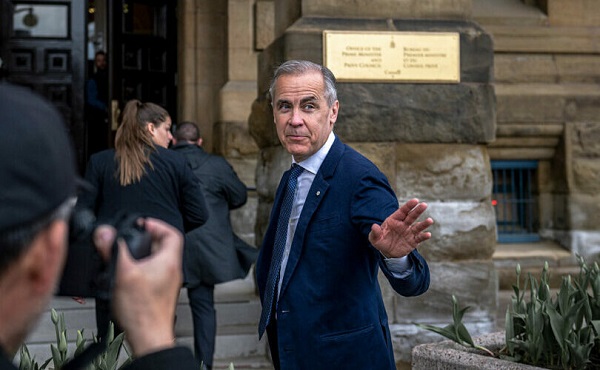
 Business16 hours ago
Business16 hours agoThe Liberals Finally Show Up to Work in 2025
-
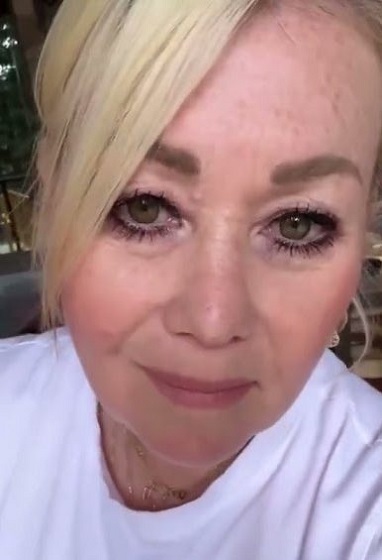
 Alberta15 hours ago
Alberta15 hours agoJann Arden’s Rant Will Only Fuel Alberta’s Separation Fire
-

 Bruce Dowbiggin12 hours ago
Bruce Dowbiggin12 hours agoCaitlin Clark Has Been The Real Deal. So Her WNBA Rivals Hate Her
-
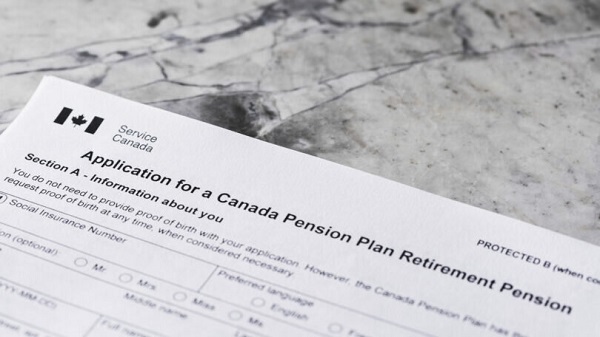
 Banks13 hours ago
Banks13 hours agoCanada Pension Plan becomes latest institution to drop carbon ‘net zero’ target
-

 Daily Caller14 hours ago
Daily Caller14 hours agoThere’s A Catch To California’s Rosy Population Stats
-

 espionage2 days ago
espionage2 days agoTrudeau Government Unlawfully Halted CSIS Foreign Operation, Endangering Officers and Damaging Canada’s Standing With Allies, Review Finds



